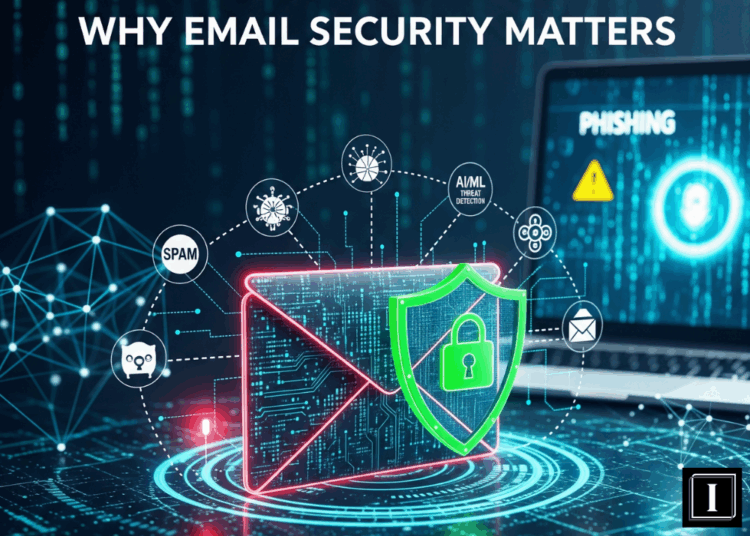Mastering Email Security: Why It Matters in the Digital Era
In today’s hyper-connected world, email security has become more critical than ever. With billions of emails sent every day—many containing sensitive data or business communications—cybercriminals continue to find new ways to exploit weaknesses in email systems. From phishing and spoofing to ransomware and data breaches, unsecured email is a major vulnerability in our digital lives.
This article explores why mastering email security is essential, the common threats to be aware of, and practical strategies you can use to safeguard your communications—whether you’re an individual, small business, or global enterprise.
Understanding the Importance of Email Security
Email security is the practice of protecting email accounts, content, and communication from unauthorized access, loss, or compromise. It involves a combination of tools, policies, and procedures that secure email against threats like phishing attacks, malware, and unauthorized surveillance.
For both personal users and organizations, the consequences of poor email security can be severe—ranging from identity theft to massive financial losses, reputational damage, and legal consequences.
Common Email Security Threats
1. Phishing Attacks
Phishing is one of the most prevalent email-based threats. Attackers impersonate trusted entities to trick recipients into revealing confidential information, such as passwords, credit card details, or login credentials. These emails often look surprisingly legitimate, making them dangerous and difficult to detect.
2. Email Spoofing
Spoofing occurs when a hacker fakes the sender’s email address to make it look like it’s coming from someone else—often a trusted contact or organization. This tactic is often used in business email compromise (BEC) scams and is a direct threat to email security.
3. Malware and Ransomware
Email remains a primary vector for malware. A single click on a malicious attachment or link can trigger the download of harmful software, allowing attackers to steal data or lock systems behind a ransom demand.
4. Man-in-the-Middle Attacks
Without encrypted communication, emails can be intercepted in transit by cybercriminals. This puts confidential information at risk, especially when transmitting sensitive business or financial data.
Best Practices for Email Security
1. Use Strong Passwords and Multi-Factor Authentication
One of the simplest but most effective steps in email security is using strong, unique passwords and enabling multi-factor authentication (MFA). This ensures that even if a password is compromised, an attacker still needs a second form of verification.
2. Implement Encryption
Email encryption protects messages during transit, ensuring that only the intended recipient can read the content. Tools like S/MIME or PGP can secure both the body of the email and attachments.
3. Educate and Train Employees
Many email-based attacks rely on human error. Regular training can help staff recognize phishing attempts, suspicious attachments, and social engineering tactics. Awareness is the first line of defense in effective email security.
4. Use a Reputable Email Security Gateway
An email security gateway filters inbound and outbound email traffic. These systems can detect and block spam, phishing emails, and malware before they reach your inbox.
5. Keep Software and Systems Updated
Regular updates ensure that vulnerabilities in email clients, operating systems, and antivirus software are patched. Many successful email attacks exploit outdated software.
The Role of AI and Machine Learning in Email Security
Modern e mail security systems are increasingly powered by artificial intelligence and machine learning. These technologies can analyze patterns, detect anomalies, and flag suspicious emails before they reach users. AI-driven solutions can adapt to new threats in real time, offering more robust protection than traditional rule-based filters.
Regulatory Compliance and Email Security
In many industries, e mail security is not just a best practice—it’s a legal requirement. Regulations like GDPR, HIPAA, and FINRA mandate that sensitive data be protected, including information sent via email. Failing to secure emails can result in substantial penalties and loss of customer trust.
Future Trends in Email Security
As digital threats evolve, so too must our email security strategies. The future will likely see more advanced forms of authentication (like biometric login), increased adoption of end-to-end encryption, and tighter integration between email platforms and broader cybersecurity ecosystems.
Zero-trust architecture, where no email or user is automatically trusted, will become more standard—helping to minimize the risk of internal and external threats.
Why You Should Prioritize Email Security Now
Email is still the cornerstone of digital communication. As more of our work, transactions, and personal interactions occur online, failing to secure this channel leaves us wide open to attack. Whether you’re a freelancer, a corporate executive, or a student, investing in mail security isn’t optional—it’s essential.
Final Thoughts
Mastering mail security in the digital era means more than just installing antivirus software or ignoring suspicious messages. It requires a proactive, comprehensive approach that combines technology, training, and vigilance.
By prioritizing email security, you not only protect your personal or business information but also contribute to a safer digital environment for everyone.
🔐 Want more expert insights on digital security and innovation?
Explore IMPAAKT, the top business magazine covering cybersecurity, sustainability, and the future of tech.











